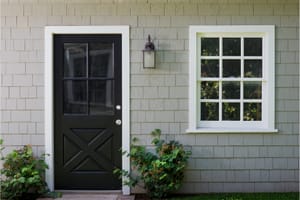Embarking on a kitchen remodel can be a thrilling yet daunting endeavor. It is a significant investment that promises to transform the heart of your home into a place of enhanced functionality and aesthetic appeal.
Although the process might seem overwhelming, with careful planning and informed decisions, it can be a rewarding journey.
In this article, we will walk you through 10 vital tips to help you navigate this process, ensuring that your kitchen remodel aligns perfectly with your vision, budget, and lifestyle.
Let's embark on this exciting journey together, setting the foundation for numerous joyful meals and convivial gatherings in your newly remodeled kitchen.
1)) Define Your Goals
Before you embark on a kitchen remodel, it's essential to define your goals or objectives.
Why do you want to remodel your kitchen, and what changes do you hope to achieve?
Is it to make your kitchen more functional, spacious, or stylish?
Answering these questions helps you set your expectations and focus your budget on the areas that are most important to you.
Tips to Define Your Remodeling Goals:
- Identify Your Needs and Wants: Start by making a list of what you need versus what you want in your kitchen remodel. Needs are the essentials, the things you cannot do without. Wants, on the other hand, are the extras, the things that would be nice to have but are not necessary.
- Consider Your Lifestyle: Your lifestyle patterns should influence your remodeling goals. If you love to cook, prioritize a functional layout with ample workspace. If your kitchen is the family gathering spot, consider adding more seating.
- Factor in Your Budget: Your goals should be realistic and fit within your budget. Determine how much you're willing to spend on the remodel and allocate funds towards the most critical aspects of your project. It's always wise to set aside some extra funds for unexpected expenses.
Clearly defining your goals is the crucial first step in any kitchen remodel.
It sets the blueprint for the entire project, guiding your decisions and helping you align your desires with your budget.
Your remodeled kitchen should not only reflect your style but also cater to your needs and lifestyle.
With the right goals in place, your kitchen transformation will be a smoother, more satisfying journey.
2)) Set A Budget
Kitchen remodels can quickly become expensive, so it's crucial to set a budget and stick to it.
Determine how much you can afford to spend, and allocate your budget appropriately.
Be sure to leave room for unexpected expenses that may arise during construction or renovation.
Tips to Set Your Remodeling Budget:
- Estimate Costs: Make a list of all the changes you want to make in your kitchen remodel, and estimate how much each one will cost. This will give you a clear idea of where your money will be going and help you allocate your budget wisely.
- Prioritize Your Needs: If your budget doesn't allow for all the changes you want, prioritize based on your needs. Spend more on things that will have a significant impact on functionality and less on purely aesthetic changes.
- Plan for Unexpected Costs: Always leave some wiggle room in your budget for unexpected costs. Renovation projects often end up costing more than anticipated due to unforeseen issues that arise during the process.
Setting a realistic budget is an integral part of a kitchen remodel.
A well-planned budget will not only aid in managing expenses but will also help in making informed decisions about where to invest.
While sticking to your budget, remember to prioritize functionality and necessity, and to account for unexpected costs.
With careful financial planning, you can transform your kitchen into an inviting and efficient space that caters to your lifestyle while also adding value to your home.
3)) Hire A Professional
If you're not experienced in remodeling, it's best to hire a professional kitchen designer or contractor.
These professionals have the expertise to guide you through the design and construction process and help you choose the best materials and appliances that fit your budget and style.
Tips to Hire a Professional for Your Remodel:
- Check Credentials and References: Confirm that the professional you're considering has all the necessary qualifications, licenses, and insurance. Also, check their previous work and ask for references. This will give you an idea of their experience and quality of work.
- Transparent Communication: Open and clear communication is vital. Ensure that they understand your vision, budget, and timeline. They should be readily available to answer your queries and keep you informed about the progress.
- Compare Quotes: Don’t settle for the first contractor you meet. Instead, get quotes from several professionals to ensure you're getting a fair price. However, remember that the lowest quote may not always offer the best value or quality of work.
Hiring a skilled professional is a crucial investment in your kitchen remodel.
They bring expertise, insights, and resources that you may not have access to, ensuring your remodel goes smoothly and results in a kitchen that's both beautiful and functional.
Check their credentials, maintain clear communication, and compare quotes to make an informed decision.
The right professional will respect your budget, understand your vision, and transform it into a reality that exceeds your expectations.
4)) Plan Your Layout
The layout of your kitchen is an important factor to consider when planning your remodel.
Think about how you move around in your kitchen and how you use the space.
Consider the triangle of activity between the sink, stove, and refrigerator, and plan a layout that works for you.
Tips to Plan Your Kitchen Layout:
- Evaluate Your Current Layout: Before making any changes, take some time to evaluate your existing layout. Identify what works and what doesn't. This will help you understand what changes need to be made.
- Consider The Work Triangle: The work triangle, which is the path between the stove, sink, and refrigerator, should be efficient and unobstructed. This makes cooking and cleaning tasks easier and more efficient.
- Think About Storage: Ample storage is essential in a kitchen. When planning your layout, consider where you'll store appliances, pots and pans, and pantry items. Effective storage solutions can keep your kitchen organized and free of clutter.
Planning an effective kitchen layout is key to enhancing functionality and ease of movement within the space.
By evaluating your current layout, considering the work triangle, and thinking through storage needs, you can create a design that works for you and your lifestyle.
An efficient layout not only optimizes your kitchen space but also makes your daily cooking and cleaning tasks more enjoyable.
Careful planning and thoughtful design are the foundations of a successful kitchen remodel.
5)) Choose The Right Appliances
Appliances are a significant investment in your kitchen. When choosing appliances, consider their size, style, and energy efficiency.
Also, consider the functionality of these appliances and choose those that fit your lifestyle and cooking habits.
Tips to Choose the Right Appliances for Your Kitchen:
- Consider Your Lifestyle: Choose appliances that align with your cooking habits and lifestyle. For instance, if you love to cook, investing in a high-quality stove might be a priority.
- Think About Size and Space: Make sure the appliances you choose fit well within your kitchen layout. This includes considering the size of the appliances in relation to the available space.
- Energy Efficiency: Opt for energy-efficient appliances. They might have a higher upfront cost, but they can save you money in the long run due to lower energy consumption.
Selecting the right appliances is a critical step in your kitchen remodel.
It's essential to consider your lifestyle and cooking habits, the size of the appliances in relation to available space, and their energy efficiency.
These considerations will ensure that your appliances not only enhance the functionality and aesthetic of your kitchen but also contribute to energy conservation and cost savings in the long run.
Your chosen appliances should complement your kitchen's design and cater to your day-to-day needs.
6)) Pick The Right Materials
The materials you choose for your kitchen remodel can make or break your project.
Consider the durability, maintenance, and style of each material.
Some popular kitchen materials include quartz and granite countertops, hardwood flooring, and stainless steel appliances.
Tips to Pick the Right Materials for Your Kitchen:
- Consider Durability: The materials you choose should be able to withstand daily wear and tear. For instance, quartz and granite are popular choices for countertops due to their durability and longevity.
- Think About Maintenance: Choose materials that are easy to clean and maintain. Stainless steel appliances, for instance, are easy to wipe down and keep looking new.
- Style Matters: The style of the materials you pick should complement your kitchen's overall design. Hardwood flooring, for instance, lends a warm and cozy feel to the space.
Choosing the right materials for your kitchen remodel is of utmost importance.
Durability, ease of maintenance, and style are key considerations that can significantly impact the functionality and aesthetic appeal of your kitchen.
Whether it's the longevity of quartz or granite countertops, the easy upkeep of stainless steel appliances, or the welcoming ambiance created by hardwood flooring, each material choice should add value and character to your kitchen.
The materials you select should not only meet your design preferences but also stand the test of time, reflecting a perfect balance between practicality and style in your remodeled kitchen.
7)) Focus On Lighting
Lighting is an integral part of any kitchen remodel. Plan for different types of lighting like recessed lighting, pendant lighting, and under-cabinet lighting.
Lighting can set the mood and enhance the functionality of your kitchen.
Tips to Optimize Lighting in Your Kitchen:
- Layer Your Lighting: Incorporate various types of lighting such as ambient, task, and accent lighting. This layered approach can enhance the mood and functionality of your kitchen.
- Consider Placement: Pay attention to where you install your lighting. Task lighting should be placed in areas where you perform important tasks like cooking or reading recipes.
- Choose the Right Bulbs: Opt for energy-efficient LED bulbs that provide good color accuracy and longevity. Their brightness and color temperature can significantly influence the overall ambiance.
Effective lighting is crucial in enhancing the overall ambiance and functionality of your kitchen.
A well-thought-out lighting plan that incorporates a variety of light types, careful placement of task lighting, and the choice of energy-efficient and high-quality bulbs can transform your kitchen space.
Not only does it illuminate key work areas, but it also contributes to creating a warm and welcoming atmosphere.
Good lighting design can significantly elevate the aesthetics and functionality of your kitchen remodel.
8)) Don't Forget Storage
Storage is essential in any kitchen, so focus on creating an efficient storage system that works for you.
Consider adding custom cabinetry, pull-out shelves, or a pantry to make the most of your space.
Tips to Maximize Storage in Your Kitchen:
- Customize Your Cabinetry: Tailor-made cabinets allow you to design your storage according to your specific needs, making the most efficient use of your space.
- Invest in Pull-out Shelves: Pull-out shelves in your cabinets and pantry provide more accessible and visible storage, making it easier to organize and retrieve items.
- Consider a Pantry: If space allows, adding a pantry can significantly increase your storage capacity. It provides a dedicated space for food items, cookware, and small appliances.
Effective storage solutions are the backbone of a well-organized kitchen.
Custom cabinetry, pull-out shelves, and a dedicated pantry can significantly enhance your kitchen's efficiency and tidiness.
By optimizing storage, you not only ensure a place for everything but also create a clutter-free and more functional kitchen space.
Good storage planning is as crucial as aesthetic considerations in a successful kitchen remodel.
9)) Choose The Right Colors
Colors can make or break the overall style of your kitchen remodel. Choose colors that complement your style and personality.
Soft, muted colors give a calm and relaxing vibe to your kitchen, while bold, bright colors give a playful and energetic feel.
Tips to Choose the Right Colors for Your Kitchen:
- Reflect Your Personality: Choose colors that resonate with your style and desired mood for the kitchen. For instance, soft and muted colors can create a serene and relaxing environment, while bold and bright shades can add a lively and energetic vibe.
- Consider the Overall Design: The color scheme should harmonize with the overall design and aesthetics of your kitchen. Make sure it complements your countertops, cabinets, and appliances.
- Use Color Psychology: Different colors evoke different feelings. For example, blues are calming, reds are stimulating, and yellows are cheerful. Utilize color psychology to create the desired ambiance in your kitchen.
The color scheme you choose is a definitive aspect of your kitchen's personality.
Ensuring it reflects your style, aligns with your kitchen's overall design, and uses color psychology to evoke the desired mood is key to creating a space that truly feels like your own.
From calming blues to energizing reds, the right color palette can significantly enhance the appeal and ambiance of your kitchen remodel.
The best color for your kitchen is one that resonates with you and transforms your kitchen into a space where you love to spend time.
10)) Plan For The Future
Think about how your kitchen remodel will fit into your plans. Consider how large your family will be, and whether you plan on entertaining guests.
Also, plan for future upgrades or changes you may want to make.
Tips to Future-Proof Your Kitchen Remodel:
- Anticipate Your Needs: Consider the future needs of your family when planning your remodel. If you plan to expand your family, or if you frequently entertain guests, ensure your kitchen layout can accommodate these changes.
- Invest in Quality Materials: Opt for durable, high-quality materials that will withstand the test of time. This may cost more upfront, but it will save you from frequent repairs or replacements in the future.
- Leave Room for Upgrades: Plan your remodel in such a way that it allows for future upgrades or changes. This could mean leaving space for additional appliances or ensuring your kitchen layout can be easily reconfigured.
Planning for the future is a critical aspect of a successful kitchen remodel.
By anticipating your future needs, investing in quality materials, and allowing room for potential upgrades, you can create a kitchen that evolves with your lifestyle and stands the test of time.
This forward-thinking approach ensures your kitchen remains functional, stylish, and enjoyable for many years to come.
Conclusion
Kitchen remodeling is more than just a home improvement project; it's about creating a space that suits your lifestyle, reflects your personality, and grows with your evolving needs.
From planning your layout and lighting to maximizing storage and choosing the right colors, each decision plays a crucial role in the overall function and aesthetic of your kitchen.
Remember, attention to detail, quality materials, and future-oriented thinking can make your kitchen timeless.
Ultimately, the goal is to create a space that is not just visually pleasing, but also a joy to cook and entertain in.
With careful planning and wise choices, you can transform your kitchen into a heartwarming space that enhances your home's value and your quality of life.
Related Articles and Guides:
- How To Plan A Kitchen Remodel
- How To Budget For A Kitchen Remodel
- How To Remodel Kitchen On A Budget
- How To Finance A Kitchen Remodel
- How To Prepare For A Kitchen Remodel
- 10 FAQs About How To Survive A Kitchen Remodel
- 10 Tips For Living Through A Kitchen Remodel
Download Our Free E-book!








